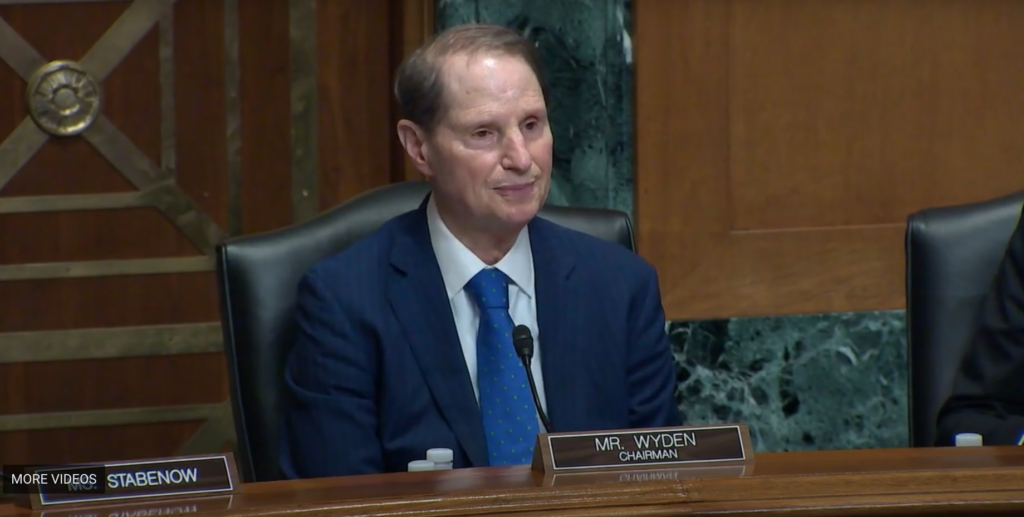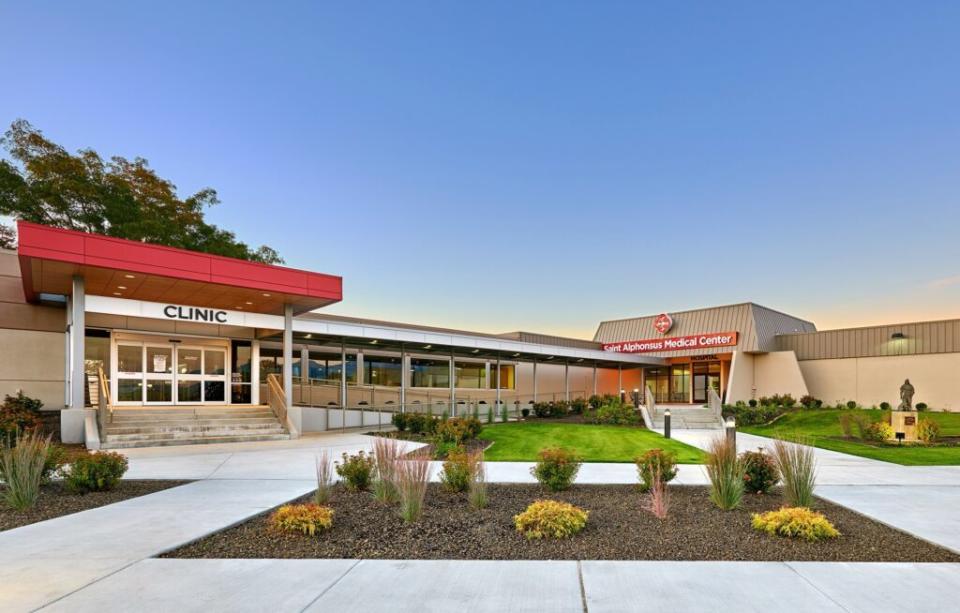Senate panel, led by Wyden, focuses on rural hospital finances and closures

- Oops!Something went wrong.Please try again later.
U.S. Sen. Ron Wyden, D-Oregon, speaks on Thursday, May 16, 2024, at a Senate Finance Committee hearing on rural health care. (Screenshot)
Rural hospitals and clinics across the U.S., including in Oregon, face economic headwinds as they struggle to meet the medical needs of people who live in remote regions with limited choices for care.
Last August, Saint Alphonsus Medical Center in Baker City cited financial problems in shutting down its birth center in eastern Oregon. It was the only maternity ward in a county with nearly 17,000 people and had served the area for 100 years. The move has forced expectant mothers to travel an extra 45 miles to Grande Ronde Hospital in La Grande, a treacherous if not impossible drive during wintertime.
Rural hospitals are often the only outposts of medical care in many communities, offering an array of essential services like delivering babies, emergency medical care and surgeries.
Yet more than half of rural hospitals in the U.S. operate in the red. At the same time, larger health care corporations are gobbling up small hospitals that have operated for decades. That can put much of the decision-making power about what services to offer – or halt – in the hands of executives who live far away and who are focused on the bottom line rather than the needs of those communities.
On Thursday, the Senate Finance Committee, led by U.S. Sen. Ron Wyden, D-Oregon, heard from hospital leaders and health care experts, with an eye toward finding policy solutions and ideas to help rural hospitals continue to maintain the financial footing needed to stay open.
In his remarks, Wyden said he’s concerned about the outlook for rural hospitals. Between 2011 and 2021, one out of every four rural hospitals nationwide stopped providing obstetrics services, Wyden said.
“What happened at Saint Alphonsus in Baker City is a textbook example of what’s happening in rural communities across the country,” Wyden said. “These Americans deserve better.”
Wyden said the nation needs a “fresh approach” that will provide extra financial support to small hospitals – but only on the condition that “large hospital chains don’t take the money and run.”
Wyden and other speakers said the issue is complex and will need a multi-pronged approach. One the list: better and adequate Medicaid and Medicare reimbursements for rural hospitals, support for telehealth services and incentives that encourage new physicians and other medical professionals to work in rural communities that often struggle to attract staff.
Eastern Oregon perspective
Jeremy Davis, president and CEO of Grande Ronde Hospital in La Grande, spoke to senators about the challenges of running a 25-bed independent hospital in rural Oregon, The hospital and its 19 outpatient clinics is 260 miles east of Portland.
Davis said hospitals face a variety of challenges including rising expenses, workforce shortages and stalled revenue. Technology, crucial for medical care, also adds to the costs. The hospitals also have faced increased insurance costs since 2019 to protect them in the event of a cyber attack, he said.
“Rural hospital administrators like me have an interconnected list of worries that keep us up at night, including workforce safety and shortages, financial stability and, more recently, worries about cybersecurity,” Davis said. “And the next emergency whether natural, public health or man-made is always just around the corner.”
When the Baker City hospital’s birth center closed, the La Grand Hospital saw a 65% increase in patients from the neighboring region, he said, adding they hired more staff.
“While we were prepared and committed to meeting this need, decisions like this are a constant juggling of limited financial resources and a balancing of our larger workforce and service needs for our community,” he said.
Davis said he recently heard one account of a pregnant woman in route to the hospital from Baker County who gave birth during a stop along a canyon before she made it to the La Grande hospital.
“Luckily, it was this time of year instead of December or November,” he said.

Other rural hospitals are shuttering entirely.
Since 2010, more than 170 rural hospitals have closed in the nation, said Michael Topchik, executive director of the Chartis Center for Rural Health, a Chicago-based firm that focuses on affordable and accessible health care solutions.
Topchik told senators that more than 400 hospitals nationwide are vulnerable to closure as they are squeezed with rising costs and low reimbursements.
“This is a national threat that will send shockwaves through communities if unchecked,” he said. “When rural hospitals close, accessing care becomes harder and jobs in those communities – jobs at the hospital and related roles – disappear.”
The dismal outlook has led formerly independent rural hospitals to affiliate with larger corporations in a bid to drive down costs, but that’s not a panacea, he said.
The La Grande hospital continues to be an independent hospital in Oregon, while the Baker City hospital that trimmed its birth center is affiliated with Saint Alphonsus Health System, which is part of nonprofit Trinity Health. Trinity Health, a national Catholic health system, is headquartered in Michigan.
In general, Wyden said one concern is that executives outside the hospital’s community make the decisions that impact people.
“So many of the shots are being called from thousands of miles away,” Wyden said.
Other states
Officials in other states pointed to similar challenges preserving services – and the need for more workers.
In Wisconsin, about 13 birth centers have closed in the last 11 years, said Lori Rodefeld, director of graduate medical education with the Wisconsin Collaborative for Rural Graduate Medical Education. The program is part of the Rural Wisconsin Health Cooperative.
One challenge for rural health care providers is finding people to fill in for them, she said.
“It is hard to be a physician of one providing service to a community,” she said. “I know how difficult it can be. If you want to take a vacation, who’s going to cover who is going to deliver your babies for you?”
But Rodefeld said progress can happen with programs that train and encourage new physicians to work in rural areas.
U.S. Sen. John Barrasso, R-Wyoming, said the University of Wyoming’s medical school participates in a partnership that has campuses in Washington, Wyoming, Alaska, Montana and Idaho.
“What we find out is that giving students rural experience and residents rural experience helps them recognize early in their career the benefits of working in rural clinics and hospitals,” he said.
At the same time, challenges like Oregon’s also are in Wyoming.
In Wyoming, five of that state’s 23 counties have lost maternity services entirely, seven have limited access to care and only 11 counties have adequate access to services, said Barrasso, who had a 24-year career as an orthopedic surgeon.
Every county in Wyoming is geographically larger than the state of Delaware, he said. If the entire state of Delaware lost all its maternity services, he said, “It would be on the front page of every paper.”
GET THE MORNING HEADLINES DELIVERED TO YOUR INBOX
The post Senate panel, led by Wyden, focuses on rural hospital finances and closures appeared first on Oregon Capital Chronicle.

